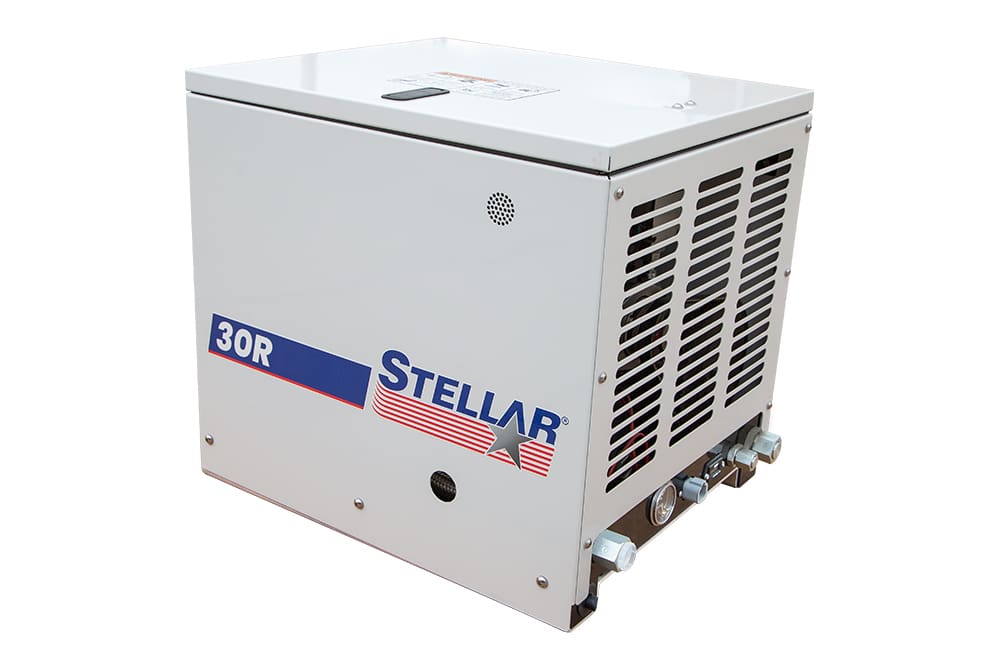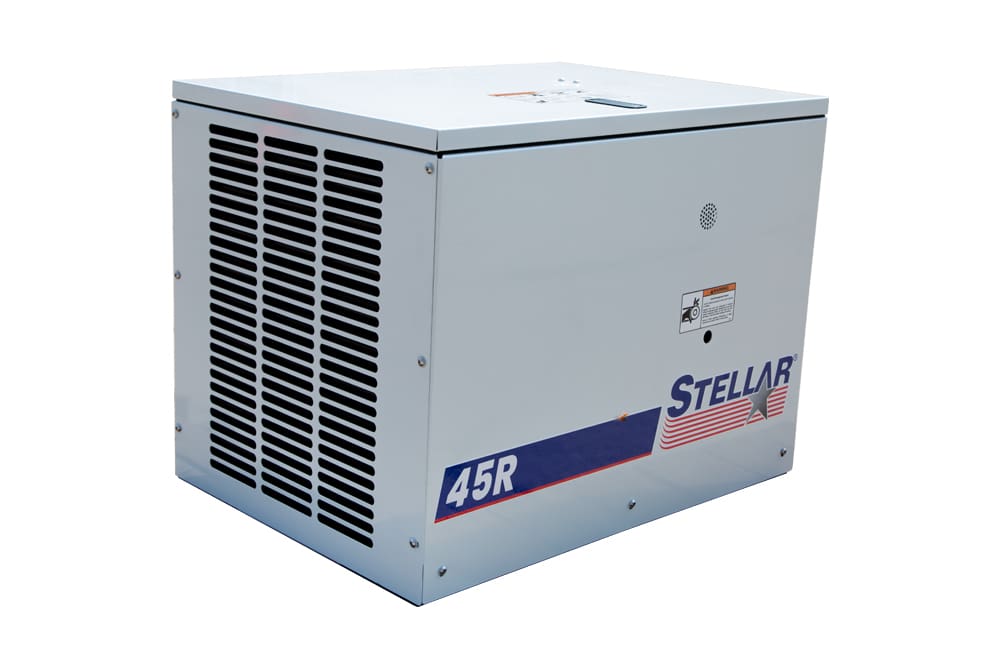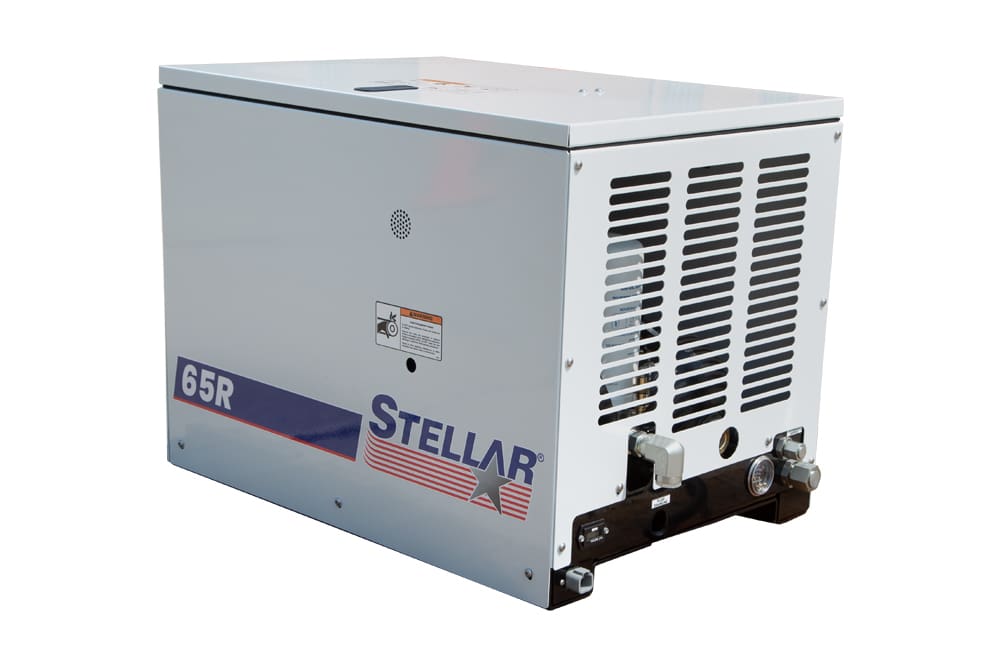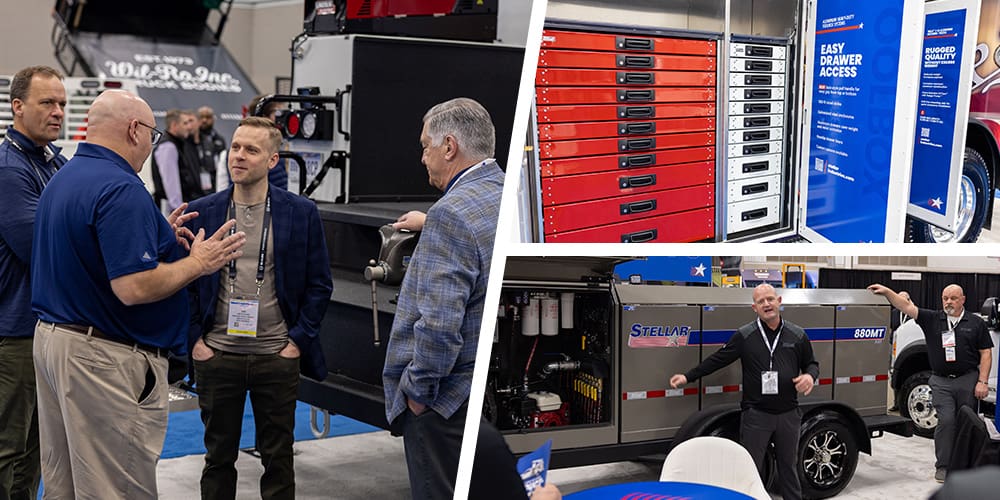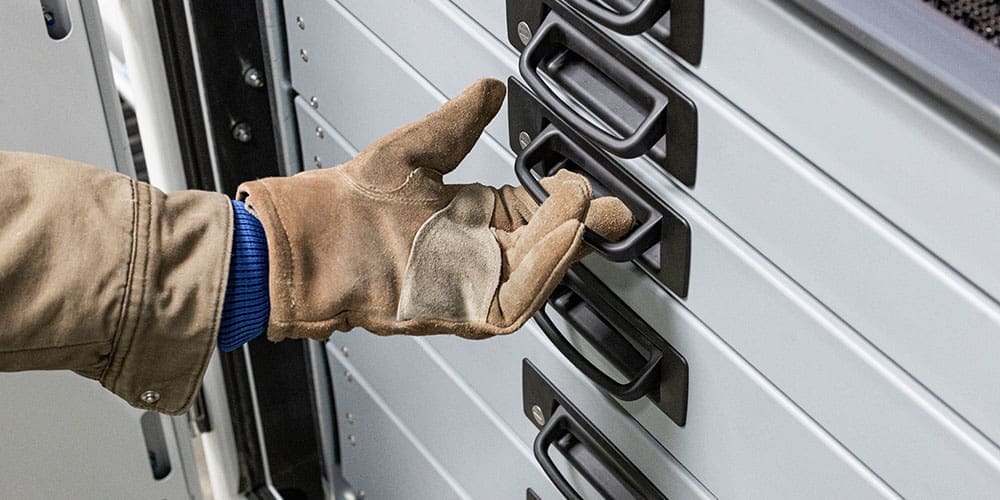Rotary Screw Air Compressor for Service Trucks
Truck mounted air compressors make your job easier by offering compressed air on demand that’s ready when you need it — so you can be equipped out in the field with as many essential pneumatic tools as possible. It all adds up to increased efficiency and profitability.
Stellar Truck Mounted Rotary Screw Air Compressors are becoming increasingly popular for service trucks and for good reason — they give you all the air you need and offer numerous features and benefits that make them ideal for many applications where high-quality equipment is required.
Stellar Rotary Screw Air Compressors (formerly American Eagle branded) are 100% duty cycle rated for continuous use so you can run them as long as your job requires without overheating.
How Do Rotary Screw Air Compressors Operate?
Rotary screw air compressors work by trapping air between two meshed rotors and reducing the volume of that trapped air as it moves down through the rotors. This decrease in volume results in compressed air, which can be used to power pneumatic air tools, inflate tires and perform many other applications.
Superior Features
Stellar Truck Mounted Rotary Screw Air Compressors boast many hardworking, long-wearing features:
- Precision-engineered, rotary screw air-end is oil-injected to eliminate metal-to-metal contact of the two compressor screw lobes for continuous 100% duty cycle
- Air-end is belt-driven by a heavy-duty hydraulic driven motor for reliable service
- Oil/water separation system and oil filtration of the compressor for long life
- Dual-purpose, integral cooler for both the compressor oil and the truck’s hydraulic oil; for most applications, this eliminates the need for a separate hydraulic oil cooler, saving you money
- Pressure-relief valve, minimum pressure/check valve, automatic air pressure relief upon shutdown and a safety relief for safety and reliability
- Bulkhead fittings for quick and simplified hookup
- Attractive powder-coated aluminum enclosure with easy-to-read temperature gauge and hour meter
- Resettable safety relay
- Automotive-type air cleaner for high capacity and long life
- High-capacity oil cooler and fan for long life
Benefits of Rotary Screw Air Compressors
The advantages of rotary screw mobile air compressors over other types of compressors that can be mounted on service vehicles include:
- Continuous airflow/100% duty cycle
- Larger volume of air
- Smoother air delivery
- Higher cfm per hp
- Smaller and lighter air ends
- Quieter
- Energy efficient
- Lower operating temperatures
- Longer lifespan
Most service technicians appreciate rotary screw compressor systems’ longevity, reliability and easy, instant access to air. Because rotary screw air compressors can run continuously, there is no need to wait for a large air receiver tank to fill before you can start using the air. It doesn’t get much more convenient than that.

